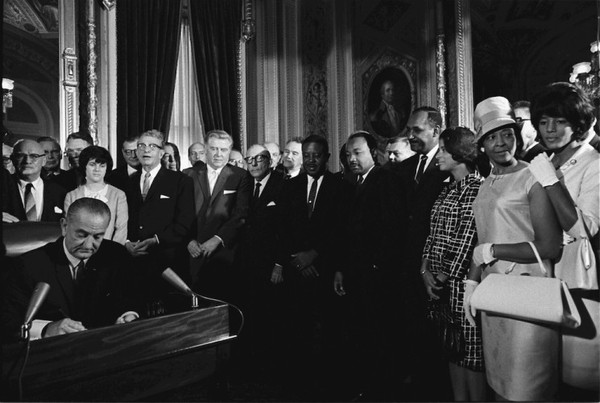August 6, 2016 will mark the 51st Anniversary of the Voting Rights Act of 1965! Last year, on the 50th Anniversary of the Act, many Americans became familiar through the movie, Selma, with the great modern era civil rights movement to pass the Voting Rights Act. Prior to the passage of the Act, many states, especially those of the confederacy southern states, had used devices and tests to virtually exclude the African American, Latino, Asian and Native American populations from registering to vote and being able to participate in the franchise.
The Voting Rights Act of 1965, led to the demise of literacy tests, grandfather clauses, poll taxes and other schemes which were used to restrict racial minorities from having access to the vote. This Act also included provisions, Section 2, to restrict other racially discriminatory practices and would later be interpreted by the courts as prohibiting those practices that had a discriminatory effect. The most powerful of the Act’s provision was Section 5, the pre-clearance provision that required that states with a history of discrimination in voting as set forth by section 4 (b) of the Act would need to submit all proposed changes in electoral procedures and practices for review to the US Department or the Federal Circuit Court of Appeals to insure that they were racially non-discriminatory.
Passage of the Voting Rights Act led to a “political revolution” with millions of African Americans being registered throughout the South. Within 10 years, African American elected officials grew from 1,000 to over 10,000 in the U.S. African American Congresspeople were elected throughout the deep South swelling the ranks of the Congressional Black Caucus.
Subsequent reauthorizations of the Act saw the addition of broader protections and requirements for accommodations for language minorities and for people with disabilities. There has been an important increase in the number of Latino elected officials in the Congress and state governments. Bi-lingual materials have been critical to ballot access.
After years of litigation which helped to expand the reach of the VRA to mandate more opportunities for racial minorities to elect candidates of their choice, the Supreme Court of the United States, in Shaw v. Reno, started a trend of hostility to districting for these purposes, classifying these as racial gerrymanders.
And in 2011, many newly elected state legislatures started adopting a series of voter suppression laws which initially were successfully rejected by the courts in various litigation or by the DOJ during the pre-clearance process.
However, it was in 2013, that the greatest set-back to the enforcement of the VRA occurred when the Supreme Court issued its destructive decision in Shelby v. Holder which held that the coverage formula under Section 4 (b) was unconstitutional as it violated the “equal sovereignty of the states” as Congress had not conducted a proper review of this formula during the 2006 Reauthorization of the Voting Rights Act. This gutting of Section 4 meant that Section 5 applied to virtually no jurisdictions making the provision a nullity.
Today, there is an entrenched battle to restore the effectiveness of Section 5 of the Voting Rights Act. In the meanwhile, active litigation has been conducted in the courts challenging the voter suppression laws. Recently, in the last two weeks, there have been major victories in which the federal courts in several states and the 4th and 5th court of appeals have curtailed or rejected voter suppression laws as violative of the Voting Rights Act.
On this 51st Anniversary, we are resolved to continue to fight to make sure that the full promise of equal access to voting rights without racial discrimination is a reality for all eligible American citizens!

